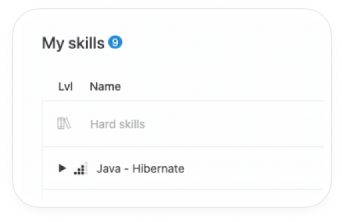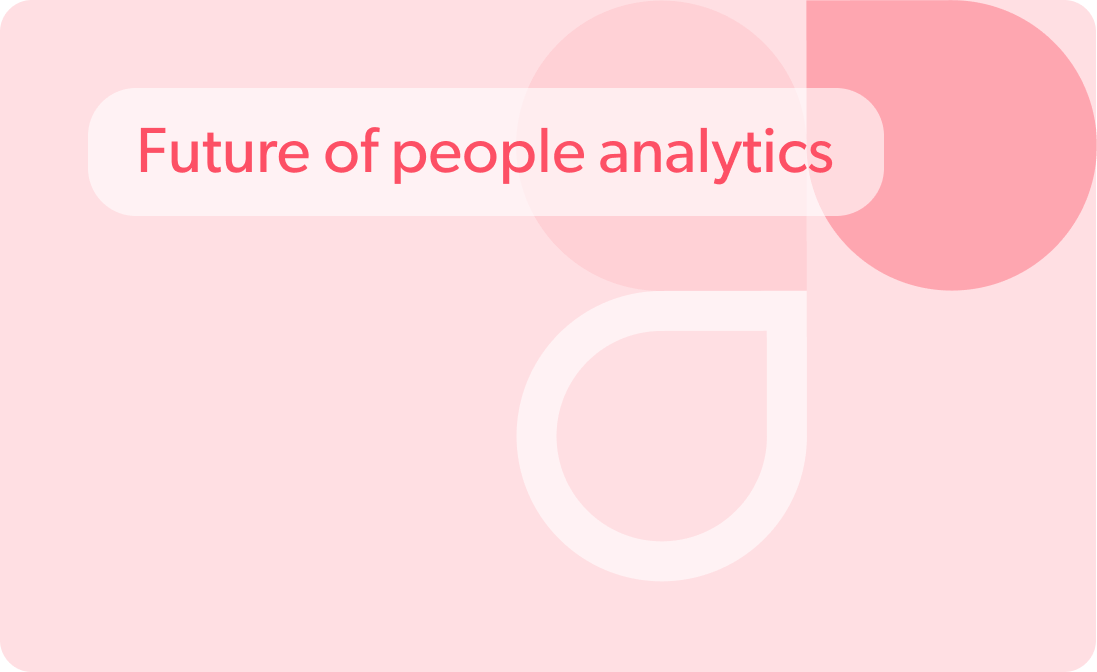Boost Employee Morale With Data-Driven Approaches
Table of contents
“To win in the marketplace, you must first win in the workplace.” — Doug Conant, founder and CEO of Conant Leadership, former president and CEO of Campbell’s Soup.
Throughout history, the ebb and flow of employee morale have determined the rise and fall of empires, the success and failure of businesses, and the overall quality of life for individuals. It has manifested as a quiet rebellion in the form of labor strikes, a wellspring of innovation that drives progress, and a source of solace during arduous times. Employee morale mirrors the health of an organization’s culture, a compass guiding its direction and a lantern illuminating the path to excellence.
Employee morale is not merely a concept; it’s the beating heart of the modern workplace, a testament to the resilience of the human spirit, and a powerful force that shapes the destiny of individuals and organizations alike. This article explores into the multifaceted world of employee morale, exploring data-driven approaches to ameliorate morale. In particular, we illuminate the pivotal role that data analytics and training and development initiatives play in improving morale.
Boosting employee morale: Job design models and training strategies
We focus now on models and data-driven methods that revolve around the intricate dynamics of job design and the associated work-related factors. These models present a dynamic perspective, shedding light on how the very structure of job roles can positively impact morale and overall job satisfaction.
The job characteristics model
Source: Test Gorilla
The Job Characteristics Model, crafted by the collaborative genius of Hackman and Oldham, offers a structured framework for optimizing job design to enhance employee morale. This model posits that certain key job characteristics profoundly impact job satisfaction and overall morale when thoughtfully integrated into work roles. It includes:
Enhancing skill variety
Skill variety, the first dimension of the Job Characteristics Model, centers around the diversity and complexity of tasks within a job. Employees are more likely to find their work engaging and fulfilling when it encompasses a range of skills and challenges. Here’s how data-driven analysis can be instrumental in enhancing skill variety:
- Identifying monotonous tasks. Through data analytics, organizations can identify specific job roles or tasks that may be monotonous or lack diversity. Employee feedback and performance metrics can help pinpoint areas lacking skill variety.
- Task rotation. Organizations can implement task rotation strategies based on data-driven insights. This approach involves periodically assigning employees different responsibilities or tasks within their job roles, mitigating monotony, and fostering skill development.
- Cross-training. Data analytics can identify opportunities for cross-training employees in complementary skill areas. This cross-training enhances skill variety while preparing employees for a broader range of tasks.
- Skill utilization. Data can be leveraged to assess how well employees utilize their skills within their current roles. When underutilization is detected, data-driven strategies can be employed to reallocate tasks and responsibilities more effectively.
Promoting autonomy
Autonomy, the second dimension of the Job Characteristics Model, refers to employees’ independence and decision-making authority. Empowering employees with autonomy can have a profound impact on job satisfaction. Here’s how data-supported autonomy can be promoted:
- Data-driven autonomy assessment. Employee surveys and performance data can be used to gauge the level of autonomy perceived by employees in various job roles. Data analysis can identify areas where employees desire more autonomy and where it would be most beneficial.
- Autonomy expansion. Data insights can guide expanding autonomy within job roles. This might involve redefining decision-making boundaries, revising approval processes, or allowing employees to have a say in their work procedures.
- Training for autonomy. Data analytics can help identify employees needing additional training or skill development to handle increased autonomy effectively. Targeted training initiatives can then be implemented to support their growth.
Overcoming skills management challenges for enhanced employee morale
Dive into skills management challenges and discover innovative solutions. Align your workforce’s skills with market demands and create a thriving workplace culture.
Providing feedback
Feedback, the third dimension of the Job Characteristics Model, is essential for maintaining employee engagement and motivation. Regular, constructive feedback mechanisms contribute significantly to morale enhancement. Data-driven feedback systems can be especially powerful:
Data-informed feedback loops. Organizations can establish feedback loops by leveraging performance data and employee feedback. These loops ensure that employees receive timely and relevant feedback on their work performance.
Performance metrics. Data analytics can generate performance metrics that are both objective and meaningful. These metrics serve as the foundation for constructive feedback discussions, allowing employees to understand their strengths and areas for improvement.
Customized feedback. Data-driven insights can enable organizations to tailor feedback to individual employees’ needs and preferences. Customized feedback ensures that employees receive guidance that resonates with their unique circumstances and goals.
Feedback impact assessment. Data analysis can track the impact of feedback on employee performance and job satisfaction over time. This assessment provides organizations with insights into the effectiveness of their feedback mechanisms and allows for continuous improvement.
Job Crafting
The notion of job crafting has risen as a powerful instrument beneficial to both employees and organizations alike. Job crafting empowers individuals to take proactive control over the contours of their roles, aligning these responsibilities more closely with their strengths, interests, and personal preferences. This innovative approach augments employee morale and tangibly contributes to the organization’s overall performance. To explore this concept further, we invite you to peruse our comprehensive blog post on job crafting.
Through job crafting, employees gain the capacity to harmonize their work experiences with their inherent strengths, personal interests, and deeply held values. The outcome is a notable upswing in job satisfaction, heightened engagement levels, and a strengthened motivation to excel in their roles. Moreover, by facilitating opportunities for job crafting within their organizational framework, companies can unlock many benefits, including enhanced employee productivity, reduced turnover rates, decreased recruitment expenditures, and an elevated employer brand in the competitive talent landscape.
Employee engagement surveys
Employee engagement surveys yield invaluable data on areas of concern and dissatisfaction. Employee engagement surveys serve as a treasure trove of information regarding the state of low employee morale within an organization. Here’s how data from these surveys can be leveraged to design tailored training initiatives:
- Identifying morale pain points. Based on survey responses, data analytics can identify specific areas where employee morale is low or declining. This data pinpointing low employee morale pain points is a starting point for targeted interventions.
- Customizing training programs. Armed with insights from employee engagement surveys, organizations can tailor training programs to address the specific concerns and issues employees raise. For instance, if survey data indicates that communication gaps cause low employee morale, communication skills training can be designed to bridge these gaps.
- Measuring training impact. After implementing training programs, data-driven assessment tools can measure the impact on enhancing low employee morale. Post-training surveys can gauge whether the targeted initiatives have effectively addressed the identified pain points.
Sentiment analysis
Sentiment analysis of employee feedback helps identify sentiment trends and issues. Sentiment analysis, powered by natural language processing, is a potent tool for understanding the sentiments and emotions expressed in employee feedback. It can be instrumental in detecting low employee morale-related issues and guiding training interventions:
- Sentiment trend analysis. Data analytics can identify sentiment trends over time by analyzing employee written feedback. If a negative sentiment trend emerges, it can trigger further investigation into the underlying causes.
- Issue identification. Sentiment analysis can flag specific issues or concerns contributing to low employee morale. These issues can be used as focal points for training initiatives to resolve them.
- Continuous monitoring. Data-driven sentiment analysis isn’t a one-time endeavor. It provides ongoing insights into the evolving sentiment landscape within the organization, enabling proactive measures to maintain high morale.
Exit interviews and churn analysis
Exit interviews and churn analysis shed light on the reasons behind employee departures. Employee turnover can be a significant indicator of low employee morale-related issues. Data analytics can play a role in predictive analytics for morale:
- Identifying turnover trends. Data analytics can identify patterns and trends in employee departures, such as common reasons for leaving. These insights can point to morale-related issues that need addressing.
- Predictive analytics. By analyzing historical data, predictive analytics can forecast which employees are at risk of leaving due to low morale-related factors. This predictive capability allows organizations to address issues and retain valuable talent preemptively.
- Churn analysis feedback. Data collected from exit interviews can provide valuable feedback from departing employees on low morale-related concerns. This feedback can inform the development of training programs to prevent similar issues in the future.
Training and development analytics
Data analytics can be harnessed to identify skill gaps and training needs. Data-driven training and development analytics ensure employees have the skills and competencies necessary to thrive. Here’s how these analytics can be intertwined with morale enhancement:
- Skill gap identification. Data analytics can assess the skills and competencies of employees, identifying gaps that may be contributing to job dissatisfaction. This data-driven approach helps pinpoint areas where training is needed.
- Targeted training initiatives. Training programs can be customized based on data-driven insights into skill gaps and training needs. Organizations can bolster job satisfaction and morale by addressing low employee morale-related skill deficiencies.
- Performance improvement measurement. Post-training performance metrics can be analyzed to determine the effectiveness of training programs in closing skill gaps. Improved performance resulting from targeted training initiatives can directly impact employee morale.
Harmonizing data-driven people analytics with training and development initiatives is a strategic approach to improving employee morale. Organizations can create a more engaged and satisfied workforce by using data to identify morale pain points, tailor training programs, monitor sentiment, predict turnover, and address skill gaps. This integration enhances morale and contributes to organizational resilience and competitiveness.
Discover the key to elevating employee morale by bridging skills gaps within your organization
Elevate your team’s morale by staying ahead of the curve! Learn to identify skills gaps effectively, create a future-proof workforce, and gain a competitive edge.
Making an ongoing commitment to employee morale enhancement
One of the core aspects of morale is the sense of belonging and growth. HRForecast helps you optimize talent development, training, and recruitment according to future job requirements, ensuring your employees feel valued and have room to evolve. With data-driven decisions, you can provide real-time market data that empowers your employees, making them feel more connected to the organization’s vision.
By exchanging gut feelings for data-driven personalized insights, you’re identifying best-fit talent sources globally and acquiring better talent more efficiently, significantly influencing morale. As employees witness your commitment to their growth and well-being, morale naturally elevates.
With HRForecast solutions, you’re not just navigating the future; you’re actively shaping it in a way that positively impacts employee morale. Make the shift toward a more engaged and inspired workforce by booking a demo today. Discover how our insights can infuse new energy into your organization and create a workplace where morale thrives.
Stay up to date with our newsletter
Every month, we’ll send you a curated newsletter with our updates and the latest industry news.




























 info@hrforecast.de
info@hrforecast.de
 +49 89 215384810
+49 89 215384810






